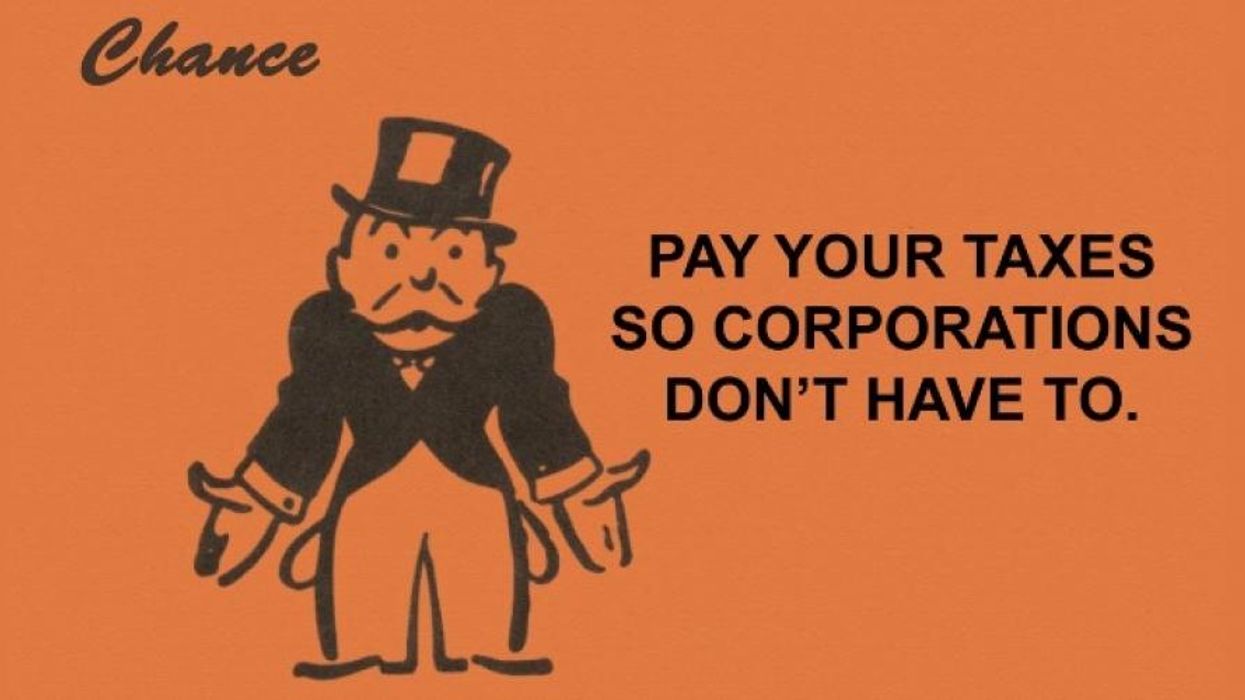This conclusion about Buffett’s tax situation emerges inescapably out of the claims the Tax Foundation makes in a research paper published just after last year’s November election. The paper’s title—America’s Super Rich Pay Super Amounts of Taxes, New Treasury Report Finds—could hardly lay out the Tax Foundation’s case more starkly.
Shareholders don’t pay corporate income tax obligations. Corporations do, from their corporate income.
But did the U.S. Department of the Treasury report the Tax Foundation paper references actually make such a finding? No, not even close.
The Treasury report does analyze the total tax payments of rich and ultra-rich taxpayers relative to their wealth. The report’s writers, all highly respected economists, took into account every tax that impacts a person’s wealth, directly or indirectly. One example: A corporate shareholder bears no personal responsibility for the payment of a corporation’s income tax. But the Treasury report attributes a proportionate share of that corporate tax to shareholders since corporate taxes reduce the value of shareholders’ holdings and, consequently, their wealth.
The Tax Foundation took this Treasury analysis of total tax payments by wealthy taxpayers and proceeded to blindly compare those payments to these taxpayers’ adjusted gross incomes. That comparison enables the Tax Foundation to insist, among other claims, that the nation’s richest 0.0001% of taxpayers are paying 58% of their adjusted gross incomes in taxes.
I didn’t find this specious Tax Foundation logic particularly surprising, given that I’ve commented in the past on the specious logic that runs through other Tax Foundation studies. But this new Tax Foundation paper vividly exposes how accepting the foundation’s logic and applying that logic to real life produces results so absurd that they demand some in-depth illumination.
Which brings us back to Mr. Buffett. Thanks to reporting by the independent news outlet ProPublica and publicly available information on the income tax payments of Berkshire Hathaway, Buffett’s corporate investment base, we have considerable data on Buffett’s adjusted personal gross income, his ownership interest in Berkshire Hathaway from 2014 through 2018, and the income tax payments Berkshire made in each of those years.
We don’t have full information about Buffett’s other tax obligations, but let’s assume those obligations amounted to zero, since any additional payments would only have driven Buffett’s effective tax rate, according to the Tax Foundation’s methodology, even higher.
Warren Buffett’s ownership interest in Berkshire Hathaway—as reported in SEC filings for the years 2014, 2015, 2016, 2017, and 2018—amounted to 20.5% that first year, 19.6% the next, and then 18.7%, 17.9%, and 17.2% the last three.
According to the data service macrotrends, Berkshire Hathaway’s income tax payments minus refunds for those years totaled $7.9 billion in 2014, $10.5 billion in 2015, and $9.2 billion in 2016 before sinking into refund territory in both 2017 and 2018, with $21.5 billion in refunds the first of those two years and $321 million the second.
Applying the Tax Foundation’s methodology would attribute to Buffett a share of Berkshire’s taxes paid—and refunds received—by multiplying his ownership stake in the corporation for each of the years by the corporate tax payment made or refund received for that year. Doing the math, Buffett ends up with a personal tax liability from Berkshire of over $1.5 billion.
That figure tops by more than 10 times Buffett’s adjusted personal gross income of $125 million for that same period, according to a ProPublica review of IRS records. The bottom line: All these numbers that we get applying the Tax Foundation’s methodology bring Buffett’s effective personal income tax rate to just over 1,200%.
And Buffett would end up having paid taxes at that rate, according to the Tax Foundation methodology, at a time when Berkshire’s income tax payments, net of refunds, were running relatively low. In 2017, the massive hurricanes Harvey, Irma, and Maria had Berkshire’s insurance businesses incurring huge losses. Without those losses, and the tax refunds resulting from them, Buffett’s effective personal tax rate—according to the Tax Foundation methodology—would have topped over 4,000%!
Impossible? Of course. So what sleight of hand is the Tax Foundation playing here? Corporate income tax payments do reduce the wealth of their shareholders. Attributing a share of those tax payments to shareholders, as the original Treasury Department study does, makes eminent sense. But shareholders don’t pay corporate income tax obligations. Corporations do, from their corporate income. The Tax Foundation, for its part, doesn’t attribute corporate income to shareholders. It only attributes corporate tax.
By taking into account corporate taxes while ignoring corporate income, the Tax Foundation’s methodology drives up effective income tax rates for the super rich only because these rich happen to own a massive amount of corporate stock. We can better understand the dynamics at play here by considering the tax situations of business owners far from billionaire status.
Consider this comparison: Taxpayers A and B each own a profitable business that generates $49,999 of income in 2025. They each reinvest all business profits in their businesses, living off the savings they have sitting in tax-exempt bonds. A and B each have $1 of other income. A, who owns his business directly, reports the profits on his personal tax return, along with his dollar of other income, and pays $10,500 in tax. His effective tax rate is 21%.
B, who owns her business through a corporation, reports the profits on the corporation’s tax return, and the corporation pays $10,500 in tax. Since B’s own adjusted gross income is just one dollar, B’s effective tax rate according to the Tax Foundation would be 1,050,000%, 50,000 times A’s effective tax rate.
In its reporting, ProPublica also considered Warren Buffett’s effective income tax rate. Taking his personal federal income tax payments as a percentage of his true economic income, including the $24.3 billion increase in his wealth between 2014 and 2018, ProPublica determined his effective income tax rate to be 0.1%. Quite a far cry from 1,200%.



